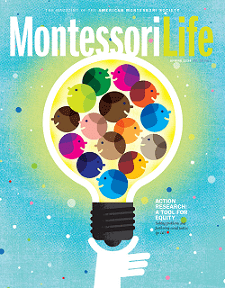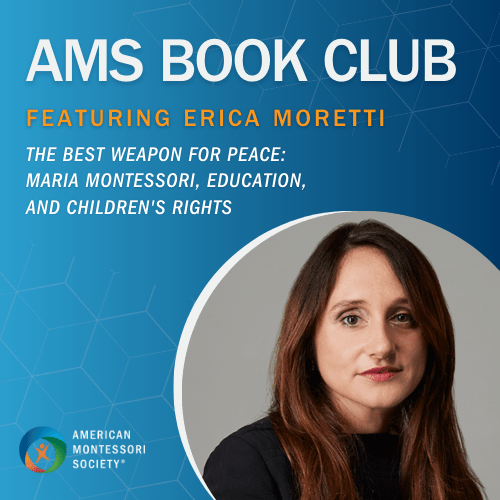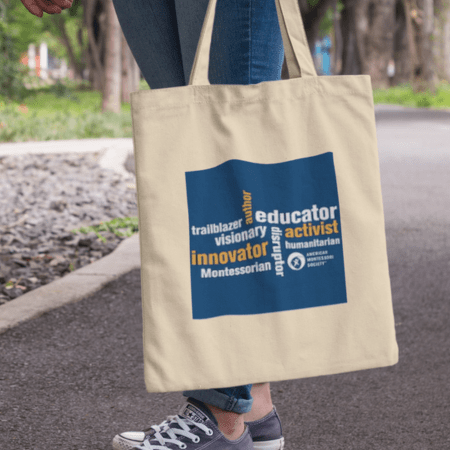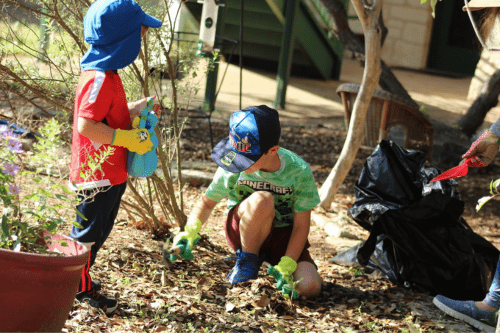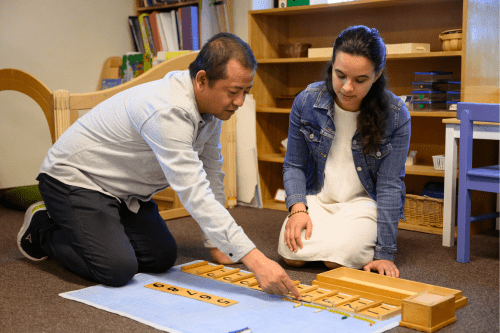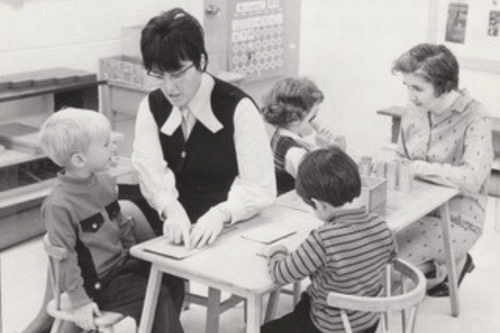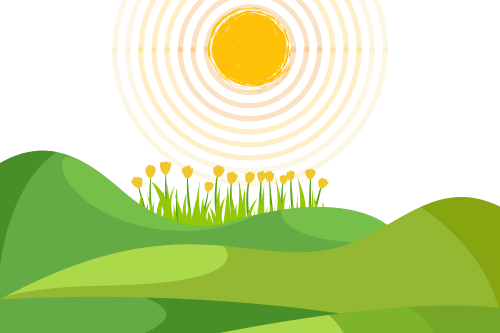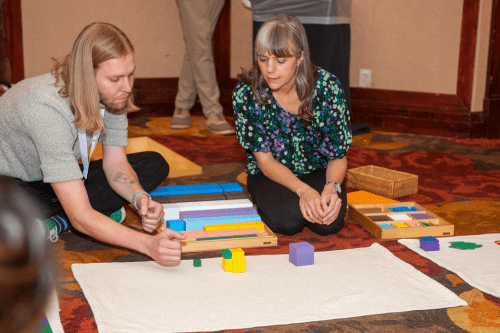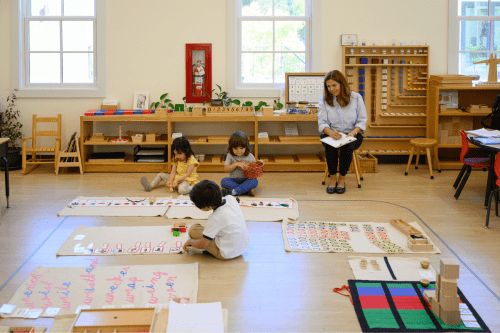The Benefits of Gardening with Preschoolers
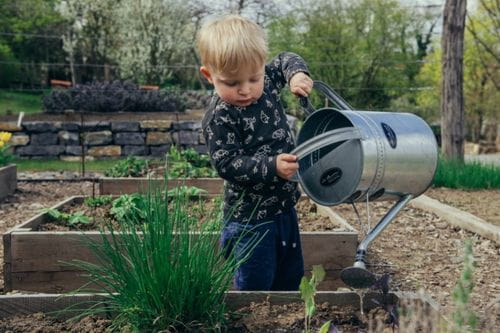
Gardening is a rewarding family activity benefitting adults and preschoolers physically, emotionally, and academically. A home garden is easily created in any space, large or small: front yard, back yard, the grassy verge between the curb and sidewalk, community garden, porch, terrace, balcony, or windowsill. Even on a small budget, families can start a gardening practice that will teach children how to relate to the natural world. It will teach botany, entomology, conservation, and resource sustainability naturally and holistically. When planting a first garden, make it small and do not expect rigid results. Gardening is not a product the way home remodeling shows would have us believe; rather it is a process that allows children to witness cause and effect in action. Let go of images that magazines or home improvement series dictate; garden to share this joyous experience with your child.
Benefits
Gardening has many benefits for everyone in a family, both children and adults. Studies show that when parents involve children in the process of growing and preparing food, positive increases occur in diet and nutrition. While working in the garden, preschoolers develop fine motor control and also work larger muscles: gardening uses practically every muscle in the body. Sensorial lessons are found throughout the garden; preschoolers can practice color recognition, identify fragrances, and learn how fresh food tastes. Emotionally, gardening reduces stress while cognitively it improves attention and memory. Studies show that gardening increases math and science skills and even boosts standardized test scores. Opportunities for academic development abound in the garden; parents can teach children new vocabulary, ecological concepts, math skills (counting and probability), and the scientific method.
Flower Gardening
Novice gardeners might want to start on a small scale, perhaps a 4’ x 4’ area around a mailbox or near the house. Purchasing small packs of flowering annuals (flowers that do not survive the winter) gives preschoolers immediate results. To create your first garden:
- Prepare the garden site by digging up any grass or unwanted vegetation. Adults are better equipped to do the heavy work of delineating a garden patch.
- Turn the soil over and mix in a bag of compost or organic soil. Preschoolers will enjoy an activity where it is okay to play with dirt.
- Do not use weed killers as they contain dangerous poisons like insecticides (many fertilizers do, too). Hand weeding is good for developing young children’s hand strength and fine motor control.
- Purchase annual flowers from a local nursery. Check with the owner to make sure the plants are not sprayed with weed killers or insecticides.
- Demonstrate how to dig a small hole deep enough to put seedlings in and then cover their roots with dirt. Small trowels for digging can be bought online or in garden stores.
- Have your preschooler use a small watering can to gently water each freshly planted flower.
- Set a time in the evening before or after dinner to water the garden with your preschooler.
- For winter, leave plants to dry out and stay into spring. The flower stalks and dead flower heads offer shelter to beneficial insects and pollinators. Check the stems and branches for chrysalides and other signs of hibernating insects.
As your family’s gardening expertise grows, try starting flowers from seeds or dive into native plant gardening with perennials. See our previous blog article about starting a pollinator garden for more ideas.
Vegetable Gardening
Growing vegetables is a wonderful lesson in crop production and shows preschoolers how nutritious foods get to the table. Cold weather crops like kale can be grown in early spring and later replaced with simple summer crops like zucchini and string beans. Root vegetables, like carrots, work best in raised beds that contain rich, loose soil. Many vegetables start well from seed so check your local garden center. Be sure to talk to the nursery owner to confirm that pesticides are not used on any vegetable seeds or seedlings. If they are, check with another garden center or try an organic nursery. Vegetables that are easy to grow from seed include most beans, zucchini, yellow squash, pumpkin, lettuce, cucumbers, corn, and carrots. Vegetables that are easier to grow from a seedling (small plant) include tomato, celery, cauliflower, and eggplant.
Gardening for Small Spaces
If starting a garden in your yard is overwhelming or if you do not have a yard, try a window box or a container garden. Window boxes can be filled with flowers, herbs, or a combination of the two. Plant herbs like dill, thyme, fennel, or parsley in the back of the container and then plant nasturtium seeds in the front. The nasturtium flowers will cascade over the front of the window box and attract pollinators like bumblebees while the back row of herbs can be used for seasoning home-cooked meals. Preschoolers will enjoy harvesting the seasonings to add to meals or to dry for later use. The herbs fennel and dill are host plants for black swallowtail caterpillars, so your family might decide not to eat the plants, but rather observe the life cycle of these pollinators from small golden egg to caterpillar to chrysalis, and finally butterfly. Simple to care for window box annuals include nasturtiums, geraniums, herbs, petunias, alyssum, and coleus.
If you have a balcony, patio, or porch, container gardening is a simple way for families to create a garden space. Preschoolers can help select containers and the plants to put in them. Containers can be filled with annuals or native perennial plants which come back every year. Many native flowers are host plants to different butterflies who lay their eggs on the leaves. It can be a magical process for preschoolers to observe the lifecycle of a butterfly. Contact your local chapter of the Native Plant Society or look online to see which native plant is required for which butterfly. Simple to care for annuals for containers include lobelias, nasturtiums, or petunias to spill down the side of the container while taller annuals like geraniums, marigolds, salvia, and zinnias grow in the back. Perennials that are host plants for various butterflies include asters, goldenrod, and milkweed.
Setting Realistic Expectations
Gardening is a messy activity so make sure everyone dresses in play clothes. Also, expect the unexpected: a flower you thought would bloom doesn’t, a seed doesn’t sprout, or a butterfly chrysalis fails. Parents can help preschoolers build strong emotional skills and develop critical thinking by reviewing what has occurred in the garden. By talking through why a plant might or might not have thrived, parents support their child’s analytic mind and critical thinking skills.
Some years, depending on extracurricular activities, your family’s garden might be wild and other years a little neater. In the end, an untended garden is still better for the environment than a lawn or mulch. Creating a sustainable future for our children starts with stewardship of the land and a more ecologically sound approach to raising crops. Children with a new understanding of and relationship with gardening and landscaping will help build a better, more sustainable future.
About the Author
 |
V. Kulikow is a former Montessori teacher and youth services librarian. She currently works as a UX designer and enjoys content creation both with words and images. |
Interested in writing a guest post for our blog? Let us know!
The opinions expressed in Montessori Life are those of the authors and do not necessarily represent the position of AMS.



